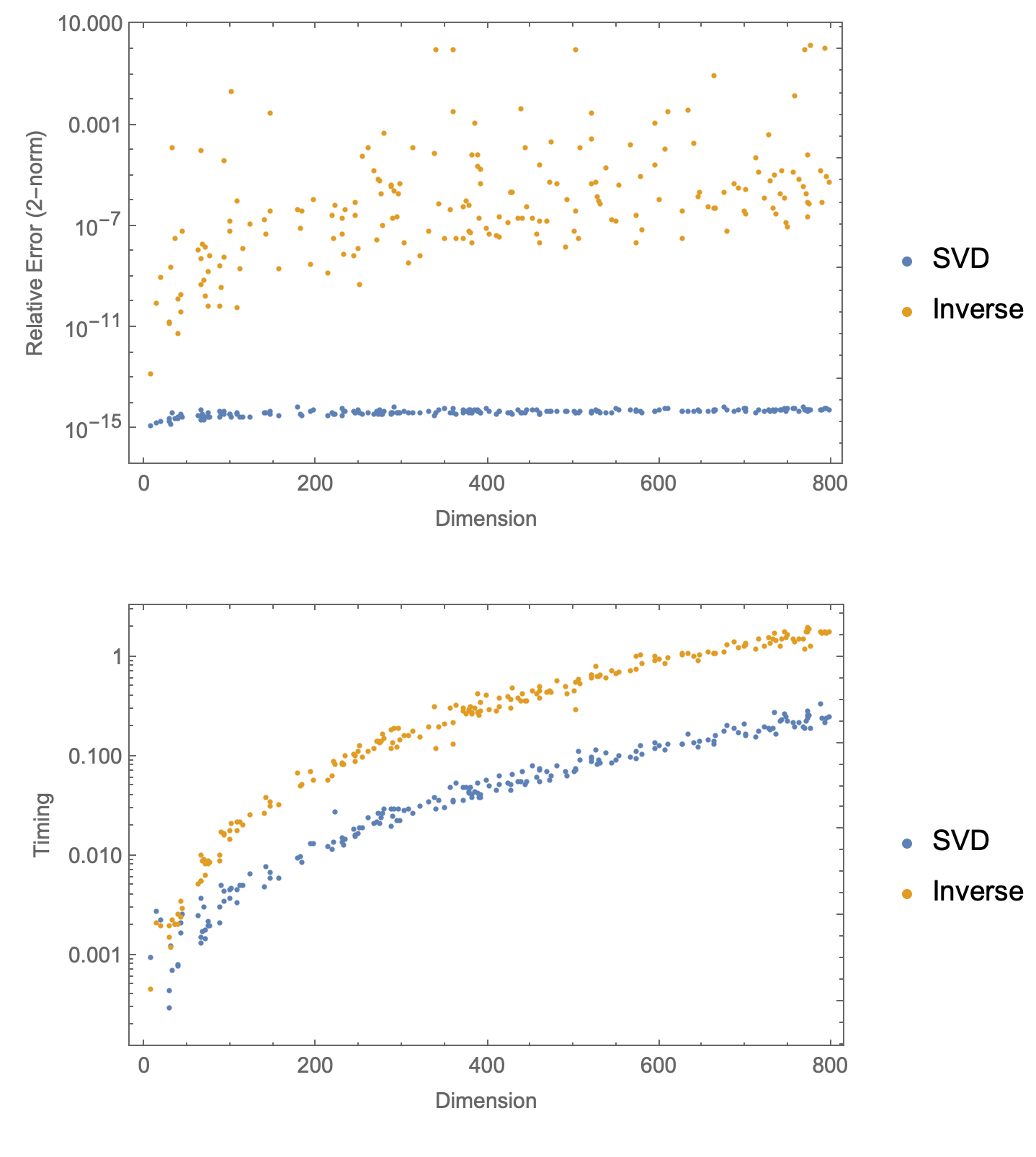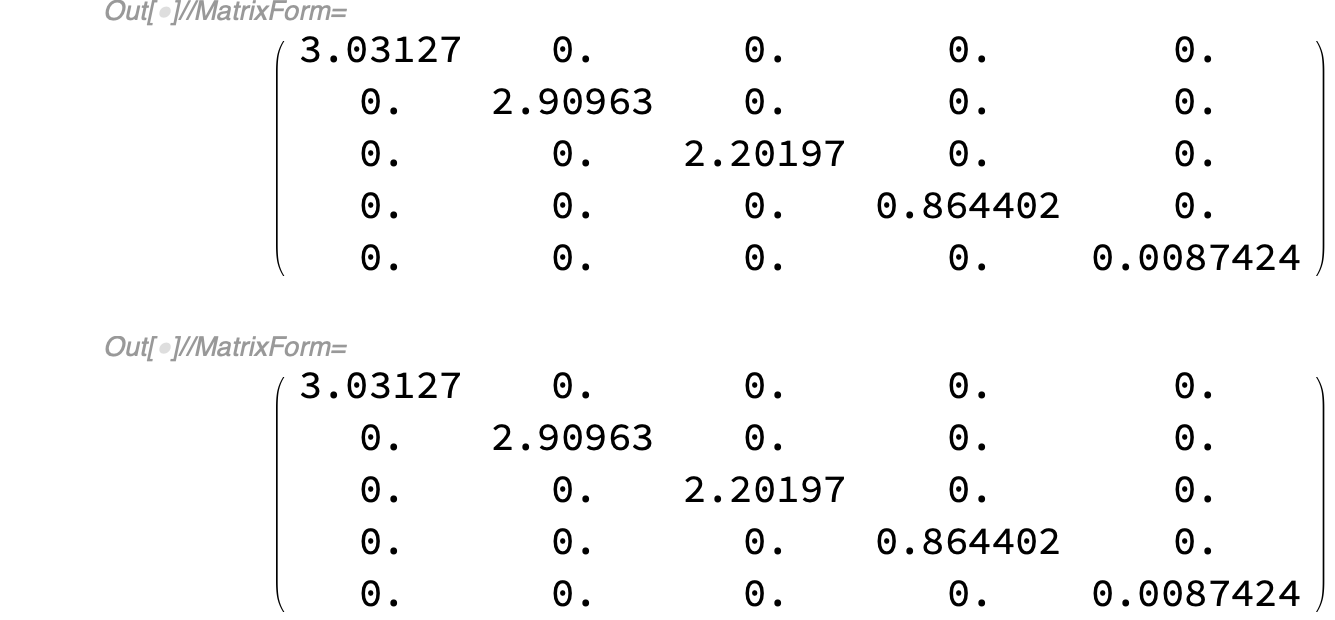The SVD of a real symmetric matrix $A$ is simple, fast, accurate way to get $X$ and $B$ (and $A$ need not be invertible):
cj = u2\[Transpose] . conj . u1;
conj - u2 . cj . u1\[Transpose] // Norm
(* 9.36499*10^-16 *)
Addendum 2
Perhaps the efficiency of SingularValueDecomposition on numerical problems is not widely appreciated. It is much more accurate than the Inverse/MatrixPower power approach and quite a bit faster.
Here is a code for comparing the two methods.
(Takes about a minute to run for 100 data points.)
SeedRandom[3];
(data = Transpose[#, {3, 1, 2}] &@Table[
(* Set up: random symm. mat. of random sizes *)
n = RandomInteger[{2, 800}];
amat = #\[Transpose] . # &@RandomReal[{-1, 1}, {n, n}];
conj = Orthogonalize@RandomReal[{-1, 1}, {n, n}];
bmat = conj . amat . conj\[Transpose];
(* SVD *)
t1 = (v1 = Last@SingularValueDecomposition[amat];
v2 = Last@SingularValueDecomposition[bmat];
xmat1 = v2 . v1\[Transpose];) // AbsoluteTiming // First;
(* Inverse *)
t2 = (xmat2 =
bmat . MatrixPower[Inverse[bmat] . Inverse[amat], 1/2];) //
AbsoluteTiming // First;
{{{n,
Norm[xmat1 . amat . xmat1\[Transpose] - bmat]/
Norm[amat]}, {n,
Norm[xmat2 . amat . xmat2\[Transpose] - bmat]/Norm[amat]}},
{{n, t1}, {n, t2}}},
{100}]) //
MapThread[ListLogPlot[#,
Frame -> True,
FrameLabel -> {"Dimension", #2},
PlotLegends -> {"SVD", "Inverse"}] &,
{#, {"Relative Error (2-norm)", "Timing"}}] &
Inverse throws a few warnings:
...
Inverse::luc: Result for Inverse of badly conditioned matrix {<<1>>} may contain significant numerical errors.
...
General::stop: Further output of Inverse::luc will be suppressed during this calculation.
The first plot shows the relative error of the two methods on random matrices versus dimension. It illustrates the stability of the SVD method. The second shows the time each run took.


